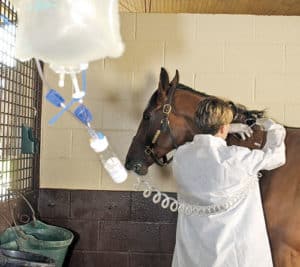Feeding Horses with Tie-Up Syndrome: A Comprehensive Guide

Tie-up syndrome, also known as exertional rhabdomyolysis, is a muscle disorder in horses characterized by muscle stiffness, pain, and cramping after exercise. Proper feeding strategies are crucial to managing and preventing episodes in affected horses. This article explores effective dietary approaches, nutritional considerations, and practical feeding tips.
Understanding Tie-Up Syndrome
Tie-up syndrome occurs when muscle cells break down due to excessive exertion or metabolic imbalances, releasing muscle enzymes into the bloodstream. This can lead to muscle damage and severe discomfort. Horses with this condition require specialized care, including tailored nutrition.
Nutritional Management for Horses with Tie-Up Syndrome
Key Dietary Goals
- Reduce muscle glycogen accumulation
- Provide balanced energy sources
- Support muscle recovery and repair
- Maintain electrolyte balance
Recommended Nutrients
| Nutrient | Role in Management | Sources |
|---|---|---|
| Low Starch & Sugar | Minimizes glycogen buildup in muscles | Beet pulp, soy hulls, hay |
| Fat | Provides alternative energy without spiking blood sugar | Rice bran, vegetable oils |
| Electrolytes | Prevents dehydration and muscle cramps | Salt blocks, electrolyte supplements |
| Vitamin E & Selenium | Antioxidants that support muscle health | Green forage, supplements |
Feeding Strategies
- Limit high-starch grains: Avoid corn and oats which can exacerbate symptoms.
- Increase fat content: Incorporate fat sources to meet energy needs.
- Frequent small meals: Helps maintain steady energy levels.
- Hydration: Ensure constant access to clean water.
Sample Feeding Plan
| Meal Time | Feed Type | Quantity | Notes |
|---|---|---|---|
| Morning | Hay + Beet pulp | 2 kg + 0.5 kg | Low starch, high fiber |
| Midday | Rice bran + Electrolyte | 0.3 kg + supplement | Energy and electrolyte support |
| Evening | Hay + Vitamin E supplement | 2 kg + as directed | Muscle recovery aid |
Frequently Asked Questions (FAQ)
Q1: Can all horses with tie-up syndrome eat the same diet?
A1: Diets should be individualized based on the horse’s severity, workload, and metabolic status.
Q2: Are there any supplements that help?
A2: Yes, antioxidants like Vitamin E and Selenium, and electrolyte supplements can be beneficial.
Q3: How important is exercise management alongside diet?
A3: Very important. Controlled exercise reduces the risk of episodes.
Conclusion
Feeding horses with tie-up syndrome requires careful attention to diet composition, focusing on low starch, adequate fat, and essential nutrients to support muscle health. Combined with proper exercise management, these strategies can help minimize symptoms and improve quality of life for affected horses.
For more detailed guidance, consult with an equine nutritionist or veterinarian specialized in metabolic disorders.
